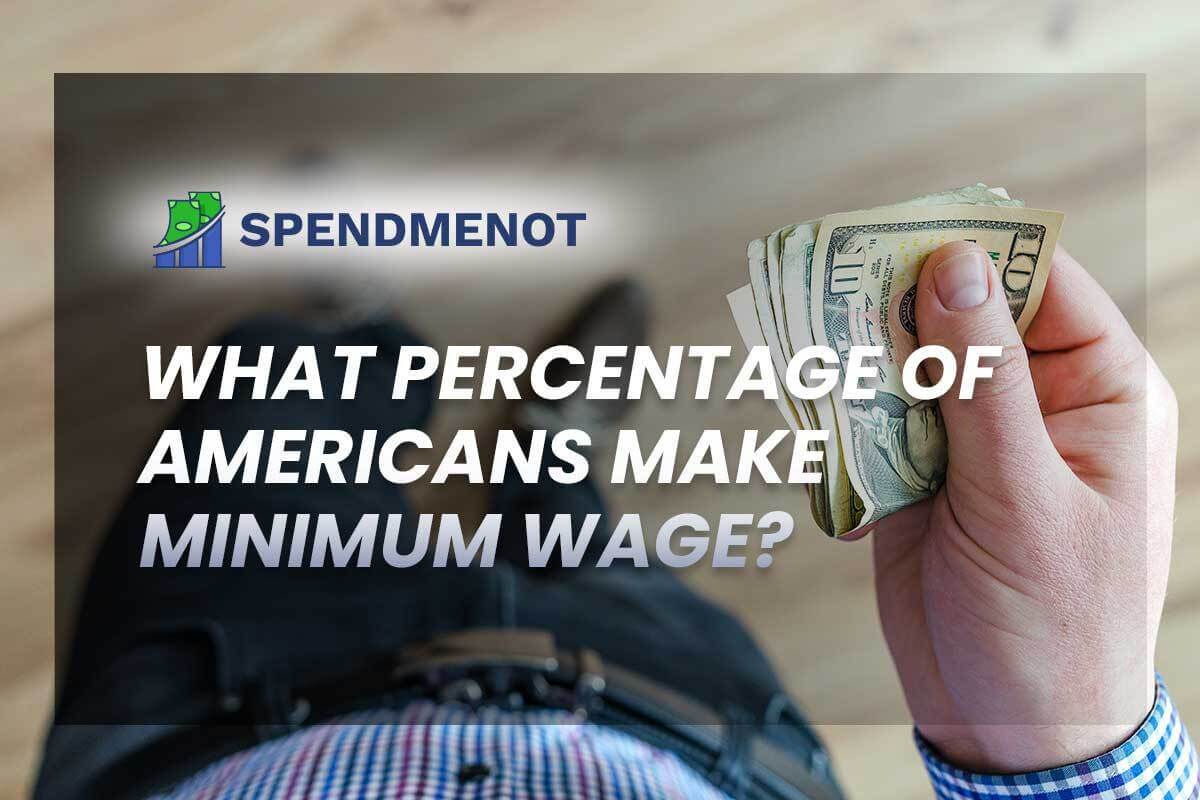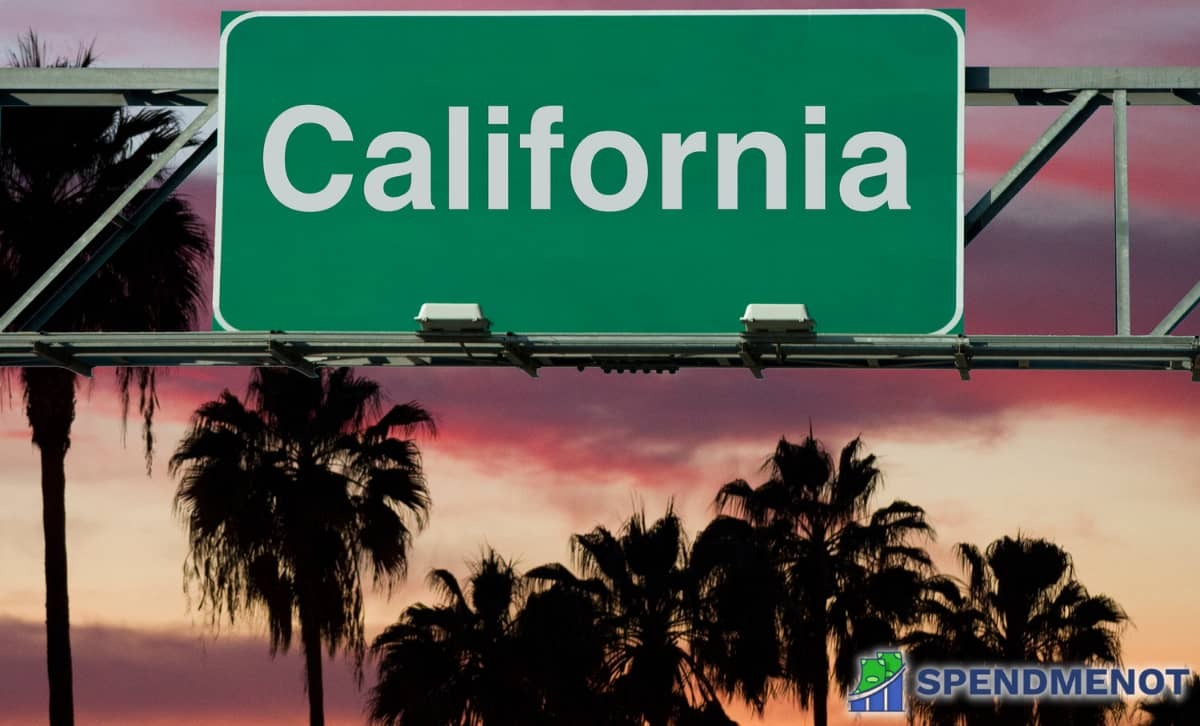17+ Consumer Spending Statistics to Know in 2023
Last Updated: March 10, 2023
Have you ever wondered how much disposable income households have and what do consumers spend the most money on?
Wonder no more! We’ve prepared some consumer spending statistics that have all the answers you need!
But why are they important?
Facts and stats about American spending habits indicate the health of the economy. If spending is too low, an economic boost is needed. On the other hand, high demand and low supply can lead to inflation. Balance is needed, for when there is none, bad things happen.
*ominous music playing*
The Great Recession is surely still a painful memory for many Americans. Thankfully, the economy has recovered since those dark times.
Here are some recent American spending stats that show you how far it’s come:
Impressive Consumer Spending Statistics (Editor’s Pick):
- The average income before taxes is $84,352.
- American households spent $7,316 on average per year on food.
- Healthcare costs Americans $5,177 on average per year.
- The average annual expenses for entertainment in 2020 were $2,912.
- The personal saving rate decreased by 0.9% in October 2021.
- Consumer spending as a percentage of GDP equaled 68.8% in 2020.
Consumer Spending Statistics on a Household Level
How does the average American spend their money?
Let’s see!
1. The average household expenses in 2020 amounted to $61,334.
(Source: Bureau of Labor Statistics)
According to the latest Bureau of Labor Statistics Consumer Expenditure Survey, the 2020 average expenditure was $61,334 per consumer unit. One consumer unit represents a household with shared expenses. It can be a family, a single financially independent person, or people living together and sharing costs.
Household spending has also decreased by 2.7% on average compared to average spending in 2019.
2. The average income before taxes is $84,352.
(Source: Bureau of Labor Statistics)
US consumer spending statistics show that the average income before taxes and the average annual expenditures are pretty close. However, since 2018, there has been an increase of 5.9% to the average income before taxes. That year the amount was $73,635, while in 2019, the average was $82,852. So following a 1.8% increase in 2020, last year’s amount doesn’t sound so bad.
3. US spending on personal insurance and pensions increased by 1.1%.
(Source: Bureau of Labor Statistics)
How much does the average American spend a year on personal insurance and pensions?
The amount increased by 1.1% in 2020 to $7,246. In 2019, the average amount spent was $7,165. This was 1.8% higher than the previous year’s figure.
As for the demographics, married couples with children allocated the most to personal insurance and pensions — 14% of their income. After all, having children is expensive. Don’t believe us? Check out the average cost of raising a child in America.
Following up are married couples, with 12.4% of their income going toward personal insurance and pensions. This consumer unit includes married couples who share a household with other people besides children.
Other consumer units whose expenditures weren’t as high are married couples only (11.6%), single parents with at least one minor (8.9%), and single person and other consumer units (10.1%).
4. American households spend $7,316 on average per year on food.
(Source: Bureau of Labor Statistics)
Personal consumption expenditure data shows that Amеricans spend approximately the same amount of money on food as they do on personal insurance and pensions. In 2020, households spent $7,316 on average on food. Seeing how cooking at home is more affordable, it is no surprise that more than half of that amount was spent on grocery shopping. As for eating out, including fast food treats, American households spent $2,375 a year on average.
The amount of money people spend on food has decreased by 10.4% compared to 2019.
The consumer unit with the highest annual expenditure on food are married couples who share a household with other people besides children. This group allocates 13.9% of their income to food, followed by households consisting of a single parent with at least one minor (13.5%).
5. Consumer spending on housing amounts to $20,409 on average per year.
(Source: Bureau of Labor Statistics)
It is no surprise that American consumers spend the most money on housing. The majority of every household’s income goes toward rent or a mortgage. This household expenditure taking up a huge amount of our paycheck has increased by 3.5% since 2019.
And from 2018 to 2019, the amount increased by 2.9%. On average, American households spent $20,679 on housing in 2019 and $20,091 in 2018.
Single parents with at least one minor allocate most of their yearly expenditures to housing – representing 40%. This group is followed by single persons and other consumer units who allocate 38.5%. For the consumer units composed of married couples, whether it is with children or without, housing represents around 32% of their average expenditures for a year.
6. The average American spending per year on transportation has decreased by 8.5%.
(Source: Bureau of Labor Statistics)
There has been a significant decrease in the average amount American households spend on transportation per year. In dollar amounts, thе expense equals $9,826.
One year earlier, in 2019, households spent $10,741. This represented an increase of 10.1% compared to 2018. Back then, American households spent $9,761 per year on average.
American spending statistics also show that there was a 2.9% increase in vehicle purchases and a 25.1% drop in fuel expenditures in 2020.
The group of consumers that allocate the highest amount to transportation expenditures is married couples living with other persons besides children and married couples with children, both allocating 17.4% of their budgets to transportation costs. Single parents with at least one minor give 15.6% of their annual expenditures on transportation.
7. Healthcare costs amount to $5,177 on average per year.
(Source: Bureau of Labor Statistics)
According to the latest consumer expenditure survey from the Bureau of Labor, healthcare expenditures decreased by 0.3% in 2020. Health insurance expenditures, representing the larger part of healthcare costs, increased by 3.9%. Yet medical services and medical supplies costs dropped by 12.2% and 12.4%, respectively.
Healthcare costs represent 10.8% of the total expenditures of married couples. For married couples living with other persons besides children, healthcare costs amount to 8.5%. Single persons and other consumer units allocate 7.8% of their annual spending to healthcare and health insurance.
8. Average annual expenses on education have decreased by 11.9%.
(Source: Bureau of Labor Statistics)
The 2020 consumer spending data shows that education expenditures decreased from an average of $1,443 per year in 2019 to $1,271 in 2020. The survey includes tuition fees and supplies for nurseries, elementary schools, high schools, colleges, universities, etc.
9. Average household spending on clothing and footwear has decreased by 23.8%.
(Source: Bureau of Labor Statistics)
How much does the average American spend on clothes per year?
The 2020 figure was $1,434, representing a drastic decrease from 2019’s $1,883. In 2018, American households spent $1,866 on apparel and services.
The 2020 average spending on clothes represents 3.1% of the annual expenditures of single parents with at least one minor. And apparel and services represented 2.5% of the annual expenses for married couples with children.
The apparel and services category from the report of the Bureau of Labor includes apparel, footwear, alterations, repairs, renting and storing clothing, dry cleaning, watches, and jewelry.
10. The average annual expenses for entertainment in 2020 were $2,912.
(Source: Bureau of Labor Statistics)
How much does the average household spend on entertainment?
The Bureau of Labor Statistics cost of living survey puts fees and admission, TV, radio, sound equipment, pets, toys, hobbies, exercise equipment, etc., in the entertainment category.
From 2018 to 2019, there was a 4.2% decrease in the average spending per year. This trend continued in 2020 and led to a further 5.8% drop. So from $3,226 on average in 2018, American households spent $2,912 on entertainment in 2020.
An interesting thing to note is that since millennials’ spending power has grown, the amount of money people spend on their pets has also increased. Namely, there was a boost in the pet industry from 2019 to 2020, with an increase of 4.6% in spending.
11. Expenses on personal care products now amount to $646 on average per year.
(Source: Bureau of Labor Statistics)
The survey doesn’t note whether this indicates a change in prices or a change in consumer spending trends. Personal care expenses dropped 17.8% from $786 in 2019 to $646 in 2020.
In the category of personal care products and services, the government surveys include hair products, oral hygiene products, bath products, cosmetics, personal care appliances, and other products. Personal care services for both men and women are also included.
12. There was a 14.4% increase in cash contributions in 2020.
(Source: Bureau of Labor Statistics)
The consumer expenditures survey defines cash contributions as money contributed to persons or organizations which aren’t part of the household. This includes alimony, child support, financial support to children that have moved out, or charitable donations to various organizations.
As this is not exactly a fixed expense, consumer spending statistics related to cash contributions can indicate an increase in disposable income. So how much disposable income does the average American have?
In 2018, the average amount of annual cash contributions was $1,888. Then, in 2019, there was a significant 5.7% increase to $1,995. And following the latest change in 2020, the amount reached $2,283.
13. Consumer spending on various expenses amounts to an average of $907.
(Source: Bureau of Labor Statistics)
How much money does the average American spend a year on miscellaneous goods and services?
In 2020, the amount spent on various expenses was $907. The year before, it was $899. So we can notice a slight increase of 0.9% in expenditures on miscellaneous.
This category of the survey consists of all other expenses that weren’t mentioned in the main breakdown of consumer spending. It includes customer spending on reading materials and subscriptions, tobacco products, smoking supplies, banking fees, credit card memberships, accounting fees, cemetery lots, occupational expenses, etc.
Consumer Spending Statistics on a National Level
Now, let’s take a look at some economic consumption numbers on a national level:
14. Personal income in October 2021 increased by $93.4 billion.
(Source: Bureau of Economic Analysis)
According to data from the US Bureau of Economic Analysis, personal income increased by $93.4 billion from September 2021 to October 2021. This represents a change of 0.5%.
15. US personal consumption expenditures increased by 1.3% in October 2021.
(Source: Bureau of Economic Analysis)
There is an increase of $214.3 billion in personal consumption expenditures in October 2021, compared to September 2021. The 1.3% rise reflected increases in both goods and services. Energy prices increased 30.2% while food prices climbed 4.8%.
16. The personal saving rate has decreased by 0.9%.
(Source: Bureau of Economic Analysis)
The personal saving rate is defined as a percentage of disposable personal income. In October 2021, the rate was 7.3%, with personal savings amounting to $1.32 trillion. This marks a 0.9% drop from the previous month.
17. Consumer spending as a percentage of GDP equaled 68.8% in Q3 2021.
(Source: Bureau of Economic Analysis)
Consumer spending represented as a percentage of the GDP is an important economic indicator. It shows that consumers have faith in the economy and are willing to spend. So a high percentage can also indicate economic growth. Of course, let’s not forget that in order to spend money, consumers need to have enough disposable income. Consumer spending as a percentage of GDP was the lowest post World War II when it dropped to around 50%.
According to a report by the Bureau of Economic Analysis, the percentage was 68.8% in the third quarter of 2021. Services account for over 64%, nondurable goods account for 22%, and durable goods account for 12.5%.
How Much Money Is Spent By Consumers in the US Each Year?
The 2020 gross domestic product of the USA is estimated to be around $20.94 trillion. Of that consumption expenditures amounted to $14.04 trillion, which is more than two-thirds of the national GDP.
Definitely not numbers to be underestimated.
Consumer spending is one of the largest contributors to the national GDP. That also makes it the driving force of the consumer economy. Considering the effect this has on the overall economic growth, consumer spending statistics are important for both the citizens and the government.










